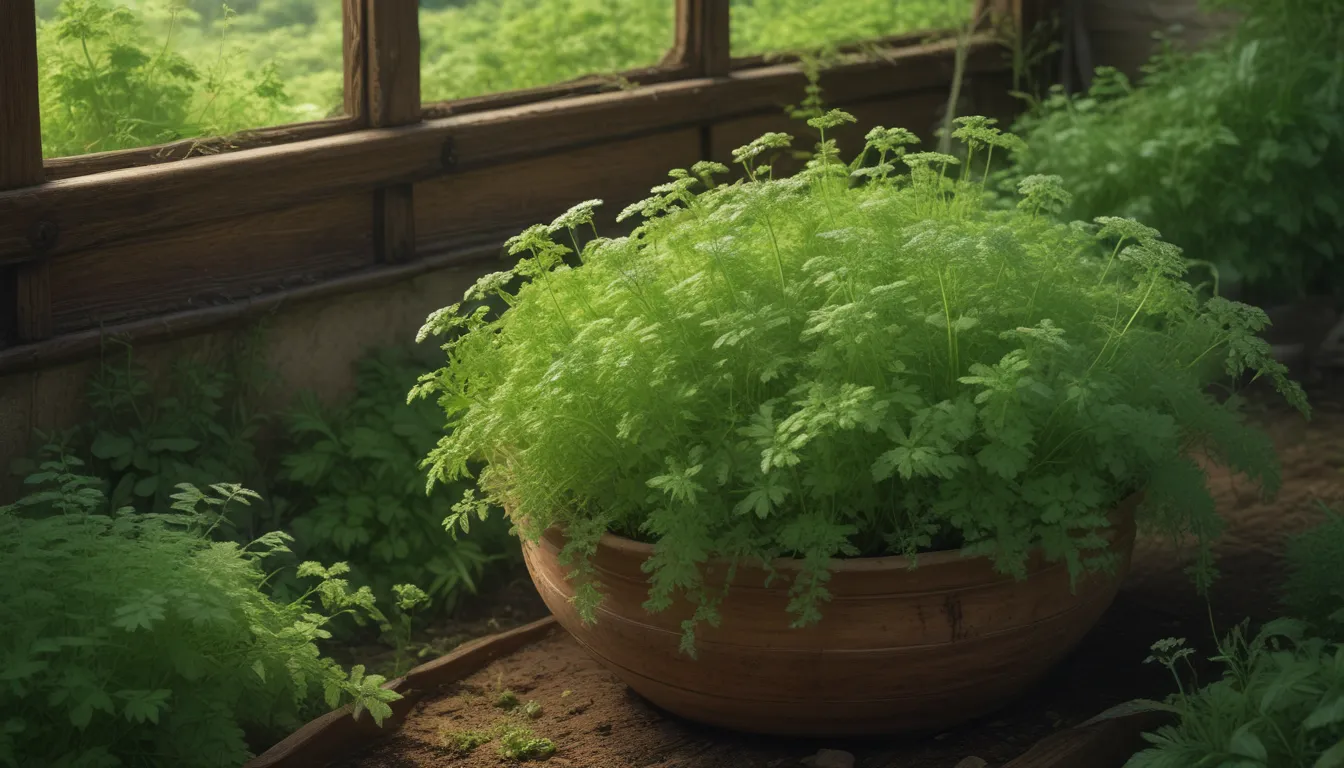The Complete Guide to Growing Chervil: An Underrated Herb for Your Garden

Chervil, also known as Anthriscus cerefolium, is a delightful annual herb that thrives in cool, shady spots that other plants often struggle in. With its unique peppery, sweet flavor that is reminiscent of parsley, fennel, and licorice, chervil is often referred to as “gourmet parsley” or “French parsley.” In the world of culinary herbs, chervil is the refined sidekick that adds a touch of sophistication to your dishes.
Why Chervil Deserves Your Attention
While parsley may steal the spotlight in the kitchen, chervil’s complex flavor profile and delicate appearance make it a favorite among foodies and passionate gardeners. Often used in combinations of fines herbes, a blend central to classic French cuisine, chervil brings a subtle yet significant contribution to dishes. However, despite its popularity in Europe, this underrated herb deserves more recognition in home gardens in the United States.
Let’s uncover everything you need to know about growing chervil at home, from its rich history and cultivation to harvest and preservation methods.
Cultivation and History
Originating from Russia, central Asia, and southern Europe, chervil has been prized for centuries for both its culinary and medicinal uses. In fact, the ancient Greeks and Romans revered this herb for its beneficial properties. With a hardiness range of USDA Zones 3 to 7, chervil thrives in cooler climates and prefers humus-rich, loamy soil with a slightly acidic pH level between 6.5 to 7.0.
As a member of the Apiaceae family, chervil boasts feathery green foliage and delicate white flowers that bloom in late spring. To successfully grow chervil in your garden, it’s essential to provide it with partial shade and consistently moist soil. Avoid overwatering, as chervil prefers even moisture levels without becoming waterlogged.
Propagation
When it comes to propagating chervil, direct seeding is the most effective method. Sow seeds in the ground when soil temperatures are between 55 to 65°F, ensuring you have a frost-free period ahead. Succession sow at intervals to ensure a continuous harvest throughout the growing season.
For those with limited garden space, chervil can be grown in containers, making it an ideal addition to your indoor herb garden. Utilize a shallow tray with soilless seed mix for growing chervil as microgreens, adding a delightful touch to salads, soups, and omelets.
How to Grow
To successfully grow chervil, focus on providing it with the necessary environmental conditions it craves. Plant in a partially shaded area where it receives four hours of sunlight daily, adjusting the light exposure based on your region’s climate. Water at the base of the plants, avoiding overhead watering to prevent fungal diseases.
Chervil should be harvested when the leaves are young, snipping off entire branches as needed. Ensure the soil remains consistently moist without being waterlogged to prevent bolting or bitterness in the leaves. To prolong the harvest season, remove flower buds regularly and harvest outer leaves for continued growth.
Growing Tips
For optimal growth and yield, follow these essential tips for cultivating chervil:
- Provide part shade in most areas to avoid heat stress.
- Maintain even soil moisture levels without overwatering.
Cultivars and Varieties to Select
Consider incorporating these popular chervil cultivars into your garden:
- Heirloom Winter: Ideal for colder climates, withstands brief frosts.
- Common: The standard variety, matures in six weeks with light frost tolerance.
- Crispum: Known for its lacy, dark, curled leaves and mild flavor.
- Vertissimo: Features dark leaves and dense growth, slow to bolt with a 60-day maturity period.
Managing Pests and Disease
While chervil is relatively resilient, occasional pests such as aphids and slugs may pose a threat. Keep an eye out for signs of infestation and address them promptly using natural solutions such as insecticidal soap or diatomaceous earth.
Monitor your plants for fungal diseases like Fusarium root rot and powdery mildew, treating them effectively by applying homemade remedies or removing infected plant parts.
Harvesting and Preserving
Harvest chervil leaves when they are young for the best flavor, utilizing them fresh or dried in culinary applications. To preserve excess harvest, consider freezing the leaves in minimal water in ice cube trays or creating herbed vinegars for later use.
Recipes and Cooking Ideas
In the kitchen, chervil shines in a wide variety of dishes, from salads and egg dishes to sauces and garnishes. Explore innovative ways to incorporate chervil into your cooking, such as herbed compound butters, pesto, and flavored vinegars, adding a subtle yet distinctive touch to your culinary creations.
Quick Reference Growing Guide
- Plant Type: Biennial herb
- Water Needs: High
- Hardiness (USDA Zone): 3-10
- Exposure: Part shade
- Time to Maturity: 6 weeks
- Spacing: 6-8 inches
- Height: 24 inches
- Spread: 12-24 inches
- Pests & Diseases: Aphids, slugs; Fusarium root rot, powdery mildew
Embrace Chervil in Your Garden and Kitchen
Chervil’s delicate flavor and versatile culinary applications make it a valuable addition to any home garden. With its straightforward growing requirements and rich history, this herb deserves a prominent place in your garden and recipes. Experiment with different cooking methods and dishes to fully appreciate the unique flavors chervil brings to your culinary creations.
Have you had the pleasure of cooking with chervil before? Share your favorite recipes and experiences in the comments below, and discover how this underrated herb can elevate your cooking to new heights.
Uncover the culinary potential of chervil and explore other lesser-known herbs to add variety and depth to your culinary repertoire. From stinging nettle to purslane, these underrated herbs are waiting to be discovered and enjoyed in your kitchen.
*





